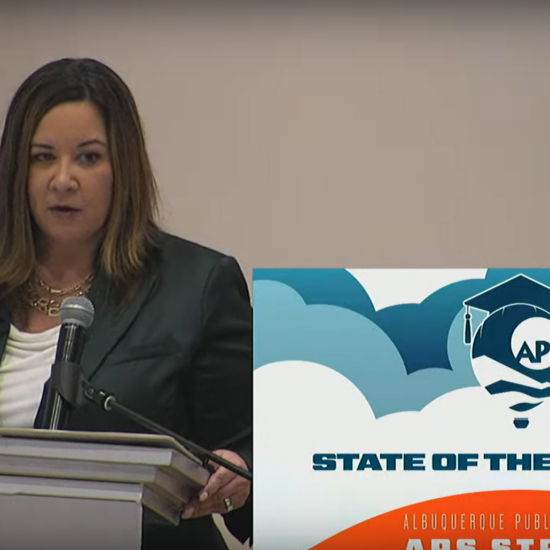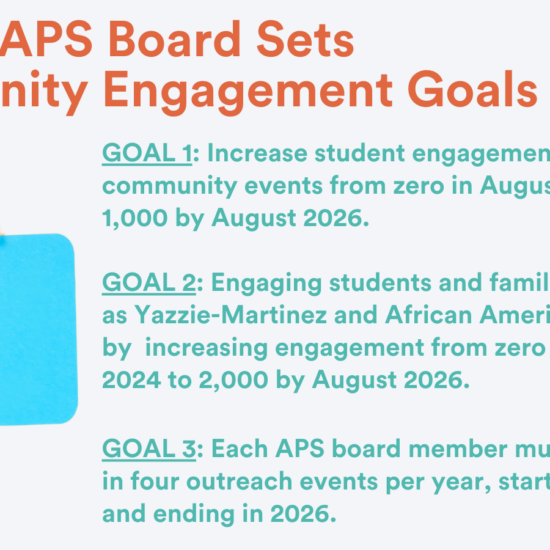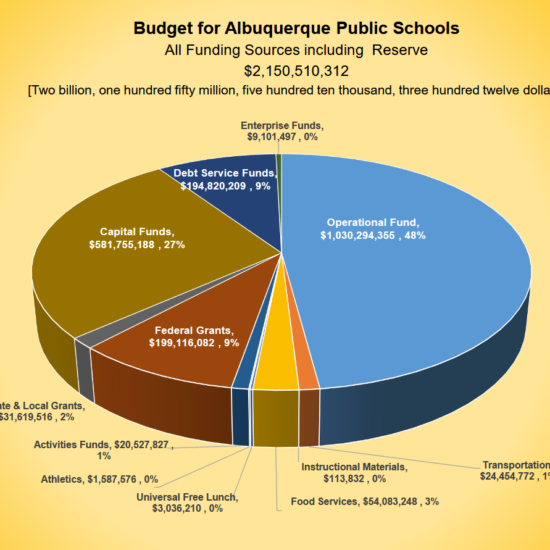
Last year’s Albuquerque Public Schools third-graders identified in the Yazzie-Martinez decision plus African American students fell short of the reading proficiency goal set by the district in its first year of concerted progress monitoring under a new strategic plan, according to a report released earlier this month.
APS administrators pointed out during an October 2 school board meeting that these third-graders, identified in the Yazzie-Martinez decision plus African Americans, were kindergarteners during the Covid-19 pandemic, and spent much of that formative year learning online, which served them poorly.
The review is part of the district’s plan to monitor progress towards the four goals adopted by the APS Board of Education in 2023, aligned with the district’s new Emerging Stronger Strategic Plan. Each of the four goals have interim goals that serve as indicators of progress.
Goal One of the district’s four overarching goals calls for a 10 percentage-point increase in reading proficiency among that group of third-graders between 2023 and 2028. The interim goal for spring of 2024 was to raise the rate from 2023’s 27.3 to 28.3.
Instead, last year’s third-graders actually slipped to a proficiency rate of 25.3.
The district is still devising individualized strategies to catch kids up, officials told board members.
“Strategic measures moving forward can be summarized by the word specificity,” Antonio Gonzales, deputy superintendent of leadership and learning told the board. This means getting detailed in determining what different subgroups need, for example special education and English language learners students need, and how to provide for those needs.
“We know that we have a strategy in place, and that’s great. And I believe in the strategy that we have in place. But what this strategy calls us to action on is being specific and specific by student,” Gonzales said.
APS has not modified its five-year goal, but now predicts that the current year’s proficiency rate for identified third-graders will be 26.6 percent, rather than the 29.3 percent that would keep the district on track to meet the ultimate goal.
The board also heard reports on two sub-goals, where the news was decidedly better.
Interim Goal 1.1 focuses on the reading proficiency rates of first graders as measured by Istation formative assessments given at the beginning, middle, and end of the school year. “This interim assessment gives teachers real-time insights into each student’s reading abilities to help inform instruction and provide intervention,” said a slide presentation produced by the district.
The three-year target for Interim Goal 1.1 is to increase the proficiency rate of first graders in the targeted groups by six percentage points—from 17 percent in 2023 to 23 percent in 2026. Students significantly exceeded that goal last school year, ending the year with a 24.1 percent proficiency rate.
Interim Goal 1.2 has a three-year target of increasing the percentage of second-grade students identified in the Yazzie-Martinez decision plus African American students who demonstrate grade level proficiency or above as predicted by Istation from 18.3% in May 2023 to 24.3% in May 2026.
By the end of last school year, 26.3 percent of those students were proficient.
If these trends hold, it will suggest that the performance of last year’s third-graders was a Covid-related aberration, and that students on the grades that follow are performing significantly better.







